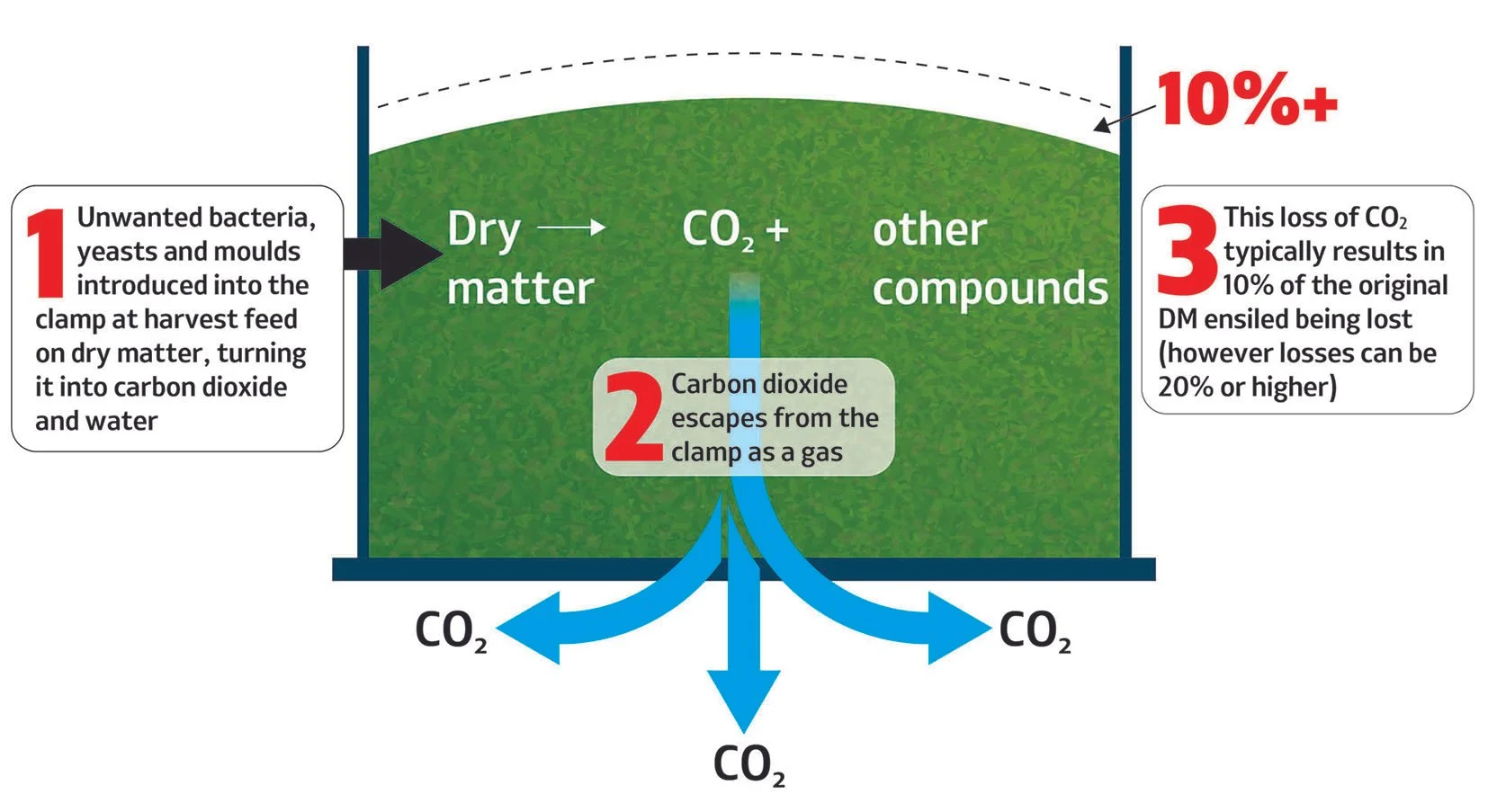Wide variability in maize, grass and cereal crops, due to this season’s turbulent weather, could put extra pressure on silage strategies on dairy farms this winter, a forage expert is predicting.
But there is still time to respond, by doing the best possible job when harvesting and conserving remaining grass silage cuts and maize.
That is the message from Volac’s Ken Stroud, who says the wet spring meant many first-cut grass silage crops were taken when grass was past its nutritional peak.
Added to that, he says much of the extra maize grown this season has been on marginal land where farmers were unable to plant winter wheat, and maize crops sown late because of the wet spring suffered a lack of initial heat.
“A lot of wheat for wholecrop was also drilled late,” says Mr Stroud, “and wheat has been hit hard by disease. All these factors are set to put extra strain on stocks of winter silage.
“That said, all is certainly not lost. Farmers still have time to respond by making sure they maximise both the quantity and quality of the maize harvest and of remaining grass silage cuts. Attention to detail with steps such as harvesting, additive choice and ensiling technique to minimise losses will be essential,” he adds.
As an example, Mr Stroud says good grass silage can still be made in September, but shorter days and dews at night mean tedding as soon as possible after mowing to shorten wilting times and reduce in-field quality losses will be crucial.
“Similarly, maize silage could take on added significance as an energy source in winter dairy rations, so harvesting on time will be key. Too many maize crops are harvested when leaves are dying off.
“Dead leaves are not only less digestible, so cows can’t derive as much energy from them, but are prone to growth of yeasts and moulds, which feed on the silage’s dry matter (DM) and energy in the clamp, causing silage to heat up. They also reduce silage palatability, and moulds produce mycotoxins which affect cow performance.
“Ideally, harvest maize at 30-33% DM and while still green. Green leaves contain sugar, and are also easier to consolidate in the clamp, which is important because air in silage allows the yeasts and moulds to start growing. With all silage crops, choosing the correct type of silage additive is also essential,” he adds.
Typically, grass silage needs more help with fermentation to preserve its nutrients and dry matter, says Mr Stroud, so consider an additive such as Ecosyl proven to do this. Maize, on the other hand, can benefit from help with fermentation and controlling yeast and mould growth, so consider a dual-acting additive such as Ecocool, which is targeted against both problems, he adds.
“Typical losses in maize silage are equivalent to 1 in every 10 trailer loads of DM ensiled, but can double if management is poor, which could include not using an additive. It’s obvious when heating losses are occurring, but about half the losses in maize can come from a poorer fermentation, which is invisible. Ecocool has been shown to keep silage cool and stable for more than 10 days after exposure to air, but it also contains the same beneficial bacterial strain as Ecosyl for a more efficient fermentation.”
Also at harvest, Mr Stroud says make sure maize is chopped short enough to aid consolidation, for example 1.5-2.0cm, or down to 1.2cm if maize is at a higher %DM.
“Also, fill clamps in horizontal layers, rather than in a wedge shape, which is more difficult to consolidate, and in layers at most 10-15cm deep to make it easier to compact. Maize at 30% DM loaded into clamps at 100 tonnes per hour needs about 25 tonnes of machinery rolling it constantly to consolidate it, or more if the maize is drier.
“Once air has been squeezed out, keep it out by creating an airtight ‘bag’ in the clamp with proper sheeting and weighting. Side sheets are important to seal against porous concrete clamp walls, and an oxygen barrier film under the top sheet will be sucked into the surface contours of the maize to create a good seal. The whole top sheet also needs fully weighting, not just the odd tyre here and there. And use netting to stop birds pecking sheets and letting in air.”
If you would like to stay up-to-date on the latest news and expert advice on making consistently better silage, sign up below. ↓




